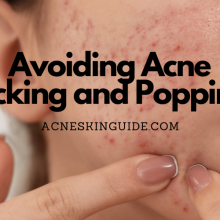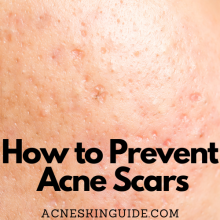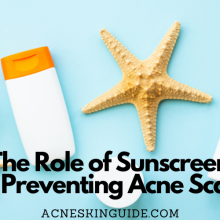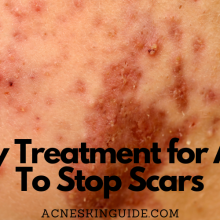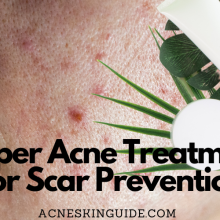Acne Spot Treatments | Acne Skin Guide
Acne spot treatments provide a quick fix for sudden breakouts when used alongside a consistent skincare routine. Proper application technique involves cleansing first, then applying the treatment sparingly overnight. Popular options include benzoyl peroxide for its bacteria-killing abilities, salicylic acid for unclogging pores, retinoids for regulating cell turnover, tea tree oil as a natural antibacterial, sulfur for drying and exfoliation, and hydrocolloid patches to absorb fluid and prevent infection. The most effective treatment depends on the type of acne lesion.
Overnight and emergency spot treatments deliver more concentrated ingredients for faster results. While spot treatments target active pimples, preventing acne scars requires additional steps like avoiding picking, using sunscreen, silicone scar treatments, or professional procedures. Potential downsides include dryness, irritation, and allergic reactions, so patch testing is advised. With proper use and complementary treatments, spot treatments minimize scarring for a clear complexion.
#1 Recommended Acne Treatment | #2 Recommended Acne Treatment |
 |  |

Acne Spot Treatments – The Need for Quick Fixes
Dealing with acne breakouts can be frustrating, especially when those pesky pimples seem to crop up at the most inopportune times. While it’s essential to maintain a consistent skincare routine to tackle acne from the root, sometimes you need a quick fix to address those sudden flare-ups. That’s where fast-acting acne spot treatments come into play. These targeted products are designed to zap pimples fast, reducing their appearance and minimizing the risk of long-term scarring or post-acne marks.
Proper Application Techniques
Before we dive into the various spot treatment options, it’s crucial to understand how to properly apply them for maximum efficacy. First and foremost, start with a clean face. Thoroughly cleansing your skin helps remove excess oil, dirt, and impurities that can clog pores and interfere with the spot treatment’s ability to penetrate. After cleansing, gently pat your skin dry and apply the spot treatment as a final step in your skincare routine. Most spot treatments are formulated to be used sparingly, so a small amount should suffice. Applying too much can lead to over-drying and further irritation. For best results, leave the spot treatment on overnight, allowing the active ingredients to work their magic while you sleep.
Types of Fast-Acting Spot Treatments
Now, let’s explore the various types of fast-acting acne spot treatments available on the market:
Benzoyl Peroxide: The Powerful Bacteria-Killer
This tried-and-true ingredient is a powerhouse when it comes to tackling acne. Benzoyl peroxide kills acne-causing bacteria and helps dry out pimples, making it an excellent choice for whiteheads and pustules. Look for spot treatments with a concentration of 2.5% to 5% benzoyl peroxide for optimal results.
Salicylic Acid: The Pore-Unclogging Solution
This beta-hydroxy acid (BHA) is a gentle exfoliant that helps unclog pores and dissolve the dead skin cells that can contribute to acne formation. Salicylic acid spot treatments are particularly effective for blackheads and clogged pores, preventing them from turning into inflamed pimples.
Retinoids/Retinol: The Cell Turnover Regulators
While typically used as a long-term acne treatment, retinoids and their over-the-counter counterpart, retinol, can also be beneficial as spot treatments. These vitamin A derivatives help regulate skin cell turnover, preventing pores from becoming clogged and reducing inflammation.
Tea Tree Oil: The Natural Antibacterial
For those seeking a natural alternative, tea tree oil is a popular choice. This essential oil has potent antibacterial and anti-inflammatory properties, making it an effective spot treatment for various types of acne lesions.
Sulfur: The Drying and Exfoliating Agent
Known for its drying and keratolytic (exfoliating) properties, sulfur can be a valuable ingredient in spot treatments. It helps absorb excess oil and slough off dead skin cells, making it suitable for targeting blackheads and whiteheads.
Hydrocolloid Acne Patches/Stickers: The Protective Barrier
These innovative spot treatments work by creating a protective barrier over the pimple, absorbing excess fluid and promoting healing. Hydrocolloid patches are particularly useful for larger, more inflamed pimples, as they help reduce the risk of scarring and prevent further infection.
Treating Different Acne Types
When it comes to treating different types of acne lesions, it’s essential to choose the right spot treatment. For whiteheads and pustules, drying treatments like benzoyl peroxide or sulfur are often most effective. Cystic or underground pimples, on the other hand, may require more potent options, such as retinoids or a combination of ingredients. Blackheads and clogged pores typically respond well to salicylic acid or retinol-based treatments, which help slough off dead skin cells and unclog pores.
Overnight Acne Treatments
In addition to traditional spot treatments, there are also overnight acne treatments designed to work while you sleep. These products typically contain higher concentrations of active ingredients and are formulated to be left on for extended periods. Drying lotions and leave-on patch treatments are popular options in this category, delivering a concentrated dose of acne-fighting power overnight.
Emergency Spot Treatments
For those emergency situations when you need to quickly minimize the appearance of a pimple before an important event or special occasion, fast-acting spot treatments or DIY remedies can provide a temporary fix. Look for maximum-strength spot treatments with ingredients like benzoyl peroxide or sulfur for a quick drying effect. Alternatively, you can try DIY options like applying a small amount of toothpaste (not gel) or a paste made from baking soda and water to the pimple overnight. However, it’s important to note that these quick fixes should be used sparingly, as overuse can lead to further irritation and dryness.
Complementary Treatments for Holistic Approach
While spot treatments are excellent for addressing active acne breakouts, they work best as part of a comprehensive skincare routine. Incorporating complementary treatments such as retinoids, BHAs, and gentle exfoliation can help prevent future breakouts and support overall skin health. Additionally, lifestyle factors like diet, stress management, and proper hydration can play a significant role in controlling acne.
Acne Scar Prevention Strategies
Lastly, it’s essential to prioritize acne scar prevention alongside treating active pimples. While spot treatments can minimize the risk of scarring, additional steps are necessary to ensure optimal results. Avoiding picking or squeezing pimples is crucial, as this can lead to further inflammation and increased scarring. Consistent use of broad-spectrum sunscreen is also recommended, as UV exposure can worsen the appearance of acne scars. For existing scars or stubborn marks, consider incorporating silicone scar gels or sheets into your routine, as these can help flatten and smooth raised scars over time. In more severe cases, professional treatments like laser therapy, microneedling, or dermal fillers may be recommended to improve the appearance of acne scarring.
Potential Downsides of Spot Treatments
It’s worth noting that while fast-acting acne spot treatments can be incredibly effective, they may also have some potential downsides. Many of these products contain drying ingredients, which can lead to excessive dryness, flaking, and irritation if overused or left on for too long. Additionally, some people may experience skin sensitivity or allergic reactions to certain ingredients, particularly those with more sensitive skin types. It’s always advisable to patch test new products before applying them to a larger area and to discontinue use if any adverse reactions occur.
The Bottom Line
In conclusion, fast-acting acne spot treatments can be a game-changer for quickly addressing pimples and minimizing the risk of scarring. By understanding the different types of treatments available and how to properly apply them, you can effectively target breakouts and prevent long-term marks or scarring. However, it’s essential to incorporate these spot treatments into a well-rounded skincare routine and prioritize sun protection and scar prevention measures for optimal results. With the right approach and products, you can effectively manage acne and maintain a clear, healthy complexion.
#1 Recommended Acne Treatment | #2 Recommended Acne Treatment |
 |  |
Summary and FAQs
Can spot treatments be used on all types of acne lesions, or are they only effective for certain types?
Spot treatments can be effective for various types of acne lesions, but their efficacy may vary depending on the specific type of lesion.
In general, spot treatments tend to work best for non-inflammatory acne lesions, such as whiteheads (closed comedones) and blackheads (open comedones). These types of treatments are particularly useful for drying out and reducing the appearance of whiteheads.
For inflammatory acne lesions like papules (small red bumps), pustules (pus-filled pimples), and nodules or cysts (large, painful, and deep lesions), spot treatments may be less effective when used alone. However, they can still be beneficial when used in conjunction with other acne treatments, such as oral medications or topical creams and gels.
It’s important to choose the appropriate spot treatment based on the type of acne lesion you’re targeting. For example:
- Benzoyl peroxide and salicylic acid spot treatments are often recommended for whiteheads and blackheads.
- Sulfur-based spot treatments can be effective for drying out whiteheads and pustules.
- Hydrocolloid patches or stickers may work well for larger, inflamed lesions like pustules or nodules, as they can help absorb fluid and promote healing.
For cystic or nodular acne, spot treatments may not be enough on their own, and you may need to consult a dermatologist for more potent treatments, such as oral antibiotics or isotretinoin (Accutane).
In general, it’s advisable to use spot treatments in combination with a consistent, well-rounded acne treatment regimen that addresses the root causes of your acne.
How long does it typically take to see results from using a spot treatment, and how long can they be used continuously without causing further irritation?
The timeframe for seeing results from acne spot treatments can vary, and the duration of continuous use without causing irritation depends on the specific product and your skin’s tolerance.
Typically, you may start to see some improvement in the appearance of a pimple within 12-24 hours of using a spot treatment. This could include a reduction in size, redness, or inflammation. However, it may take a few days (2-4 days) to see more significant results, such as the complete drying out or disappearance of the pimple.
The speed of results can depend on factors like the severity of the acne lesion, the active ingredients in the spot treatment, and how consistently you apply it.
As for how long you can continuously use a spot treatment without causing further irritation, this can vary based on the formulation and your skin’s sensitivity. Here are some general guidelines:
- Benzoyl peroxide and salicylic acid spot treatments: These can typically be used for 1-2 weeks continuously without causing excessive dryness or irritation for most people.
- Sulfur spot treatments: These tend to be drying, so it’s best to use them for no more than 5-7 days continuously.
- Tea tree oil spot treatments: These can often be used for 1-2 weeks continuously if diluted properly, but undiluted tea tree oil may cause irritation with prolonged use.
- Hydrocolloid patches/stickers: These can usually be left on for several days (up to a week) until the pimple has healed.
It’s important to monitor your skin’s reaction and discontinue use if you experience excessive dryness, peeling, redness, or irritation. Additionally, it’s generally recommended to take breaks from using spot treatments every few weeks to allow your skin to recover.
If you’re not seeing improvement after a week of consistent use, or if your acne is severe, it’s best to consult a dermatologist for professional guidance on more effective treatment options.
For those with darker skin tones, are there any specific considerations or recommendations when using spot treatments to minimize the risk of post-inflammatory hyperpigmentation or scarring?
For individuals with darker skin tones, there are some specific considerations and recommendations when using acne spot treatments to minimize the risk of post-inflammatory hyperpigmentation (PIH) or scarring.
- Use gentle, non-irritating formulations: People with darker skin tones are more prone to PIH, which occurs when inflammation or injury to the skin causes excess melanin production. Harsh or drying spot treatments can exacerbate inflammation and increase the risk of hyperpigmentation. Look for gentle, non-irritating formulations with ingredients like niacinamide, azelaic acid, or hydrocolloid patches, which are less likely to cause irritation.
- Avoid high concentrations of benzoyl peroxide: While benzoyl peroxide is an effective acne treatment, higher concentrations (above 5%) can be overly drying and increase the risk of PIH in darker skin tones. Start with lower concentrations (2.5%) and gradually increase if needed.
- Be cautious with retinoids: Retinoids (like tretinoin or adapalene) can be effective for acne, but they can also cause dryness, irritation, and increased susceptibility to sun damage, which can worsen PIH. Introduce retinoids slowly and use them in combination with a gentle moisturizer and broad-spectrum sunscreen.
- Consider hydrocolloid patches: Hydrocolloid patches or stickers are an excellent option for darker skin tones, as they create a protective barrier over the pimple, reducing the risk of trauma, inflammation, and subsequent hyperpigmentation.
- Use sun protection: Consistent use of broad-spectrum sunscreen with an SPF of 30 or higher is crucial for individuals with darker skin tones, as UV exposure can worsen PIH and scarring.
- Consult a dermatologist: If you have severe acne or are prone to scarring or hyperpigmentation, it’s recommended to consult a dermatologist for professional guidance on the most appropriate spot treatments and strategies for your skin type and concerns.
- Consider professional treatments: In some cases, professional treatments like chemical peels, microneedling, or laser therapy may be recommended to help fade existing hyperpigmentation or improve the appearance of acne scars.
By taking these precautions and using the appropriate spot treatments, individuals with darker skin tones can effectively treat acne while minimizing the risk of long-term discoloration or scarring.
Are there any precautions or specific instructions for using spot treatments on sensitive areas like the face, or near the eyes or mouth?
Yes, there are some important precautions and specific instructions to follow when using acne spot treatments on sensitive areas like the face, or near the eyes and mouth:
- Avoid the eye area: Most spot treatments should not be applied too close to the eyes, as the ingredients can cause stinging, irritation, or even damage if they get into the eyes. Leave at least a quarter-inch buffer zone around the eyes when applying spot treatments.
- Be careful around the mouth and lips: Spot treatments can potentially cause dryness, peeling, or irritation if applied too close to the mouth or lips. Avoid getting the product directly on the lips or inside the mouth.
- Do a patch test first: If you have sensitive skin or are trying a new spot treatment, it’s a good idea to do a patch test on a small area of your face first, like your jawline, to check for any adverse reactions before applying it more broadly.
- Use less potent formulas on sensitive areas: Areas like the nose, upper lip, and around the eyes tend to be more sensitive. Consider using spot treatments with lower concentrations of active ingredients, like 2.5% benzoyl peroxide instead of higher percentages, on these delicate areas.
- Avoid abrasive or drying products: Steer clear of spot treatments with drying alcohols, menthol, or abrasive ingredients when using them on the face, as these can cause excessive irritation and dryness, especially on sensitive skin.
- Moisturize after use: After allowing the spot treatment to absorb or dry, apply a gentle, non-comedogenic moisturizer to the treated areas to counteract any drying effects and keep the skin hydrated.
- Discontinue use if irritation occurs: If you experience significant redness, burning, stinging, or peeling after using a spot treatment on your face or sensitive areas, discontinue use immediately and consult a dermatologist if necessary.
By following these precautions and using spot treatments judiciously on sensitive facial areas, you can effectively treat acne while minimizing the risk of irritation or adverse reactions.
Can spot treatments be used in combination with other acne medications or treatments, such as oral antibiotics or retinoids, and if so, what are the potential interactions or side effects to be aware of?
Yes, spot treatments can often be used in combination with other acne medications or treatments, but it’s important to be aware of potential interactions or side effects.
Oral Antibiotics:
Many dermatologists recommend using topical spot treatments alongside oral antibiotics for moderate to severe acne. The combination can be effective as the oral antibiotic works from the inside out, while the spot treatment targets individual pimples topically.
Potential Interactions: There are generally no significant interactions between most spot treatments and oral antibiotics like doxycycline or minocycline. However, some spot treatments containing benzoyl peroxide may temporarily reduce the effectiveness of birth control pills.
Retinoids (Tretinoin, Adapalene):
Retinoids are often prescribed as part of an acne treatment regimen along with spot treatments. The retinoid helps unclog pores and regulate skin cell turnover, while spot treatments provide targeted treatment for active pimples.
Potential Side Effects: Using retinoids and spot treatments together can increase the risk of dryness, peeling, and irritation, especially when first starting treatment. It’s recommended to gradually introduce retinoids and spot treatments, starting with lower concentrations and alternating their use on different days initially.
Other Topical Acne Medications:
Spot treatments can sometimes be used alongside other topical acne medications like clindamycin, erythromycin, or azelaic acid. However, caution should be exercised as using multiple drying or irritating products simultaneously can overwhelm the skin.
Potential Interactions: Some ingredients in spot treatments, like benzoyl peroxide, may deactivate or reduce the effectiveness of certain topical antibiotics like clindamycin or erythromycin when used at the same time.
It’s crucial to consult with a dermatologist before combining any acne treatments to ensure compatibility and proper usage. They can provide guidance on how to safely layer products or recommend using them on alternating days to minimize potential interactions or excessive dryness and irritation.
In general, starting with lower concentrations of spot treatments and gradually increasing as needed while monitoring for any adverse reactions is the safest approach when using multiple acne medications concurrently.


